The world of courtly literature
The world of courtly literature
The literature of the Heian period (late 8th to 12th centuries) contains valuable information about politics, society, and the lifestyles of the aristocracy. The Saiku and Saio often appear as subject matter, offering clues about how the Saiku was regarded by contemporary people. Ise monogatari (The Tales of Ise) and Genji monogatari (The Tale of Genji) are two literary works where the Saio play important roles.Illustrated Handscroll of The Tales of Ise
Ise monogatari (The Tales of Ise) is considered a leading example of an uta monogatari, or “poem tale,” a narrative composed mainly of waka poems. Ise monogatari recounts the numerous love affairs of the protagonist, a handsome aristocrat thought to be modeled on Ariwara no Narihira (825–880). The author and date is unknown, but most of it is believed to have been written around the 10th century.Among the 125 tales recorded in the Ise monogatari is “Kari no Tsukai” (The Imperial Huntsman), an episode describing a liaison between the protagonist and a Saio set at the Saiku.
The reproduction on display shows the “Kari no Tsukai” segment of the handscroll. Scenes proceed from right to left.
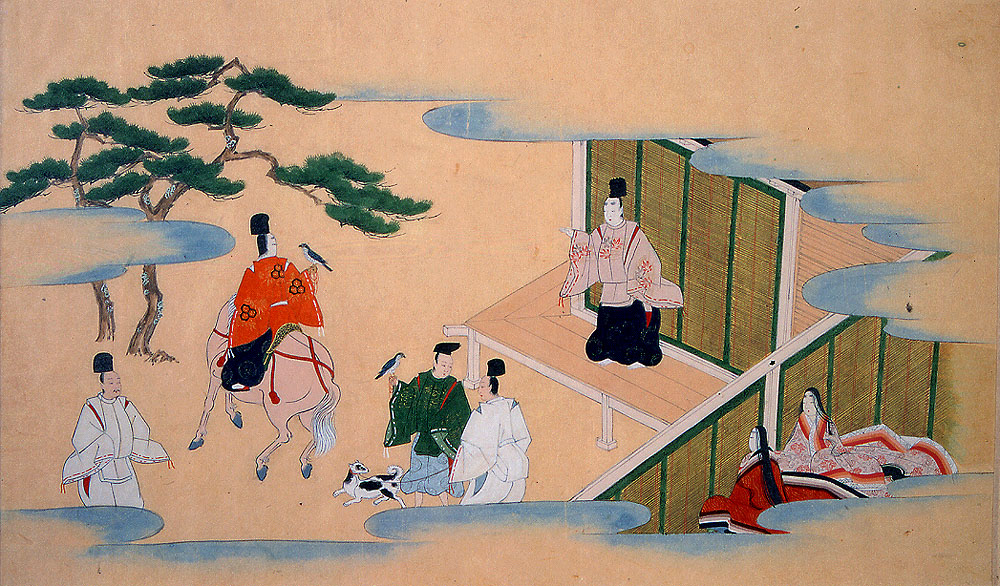 1) The protagonist visits the Saiku
1) The protagonist visits the Saiku
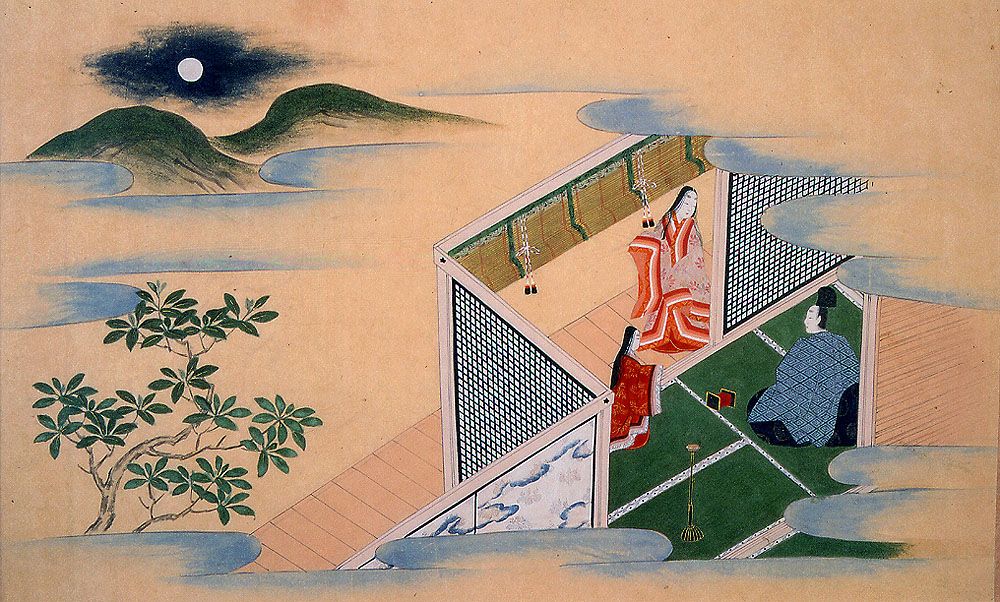 2) The Saio visits the protagonist’s chamber
2) The Saio visits the protagonist’s chamber
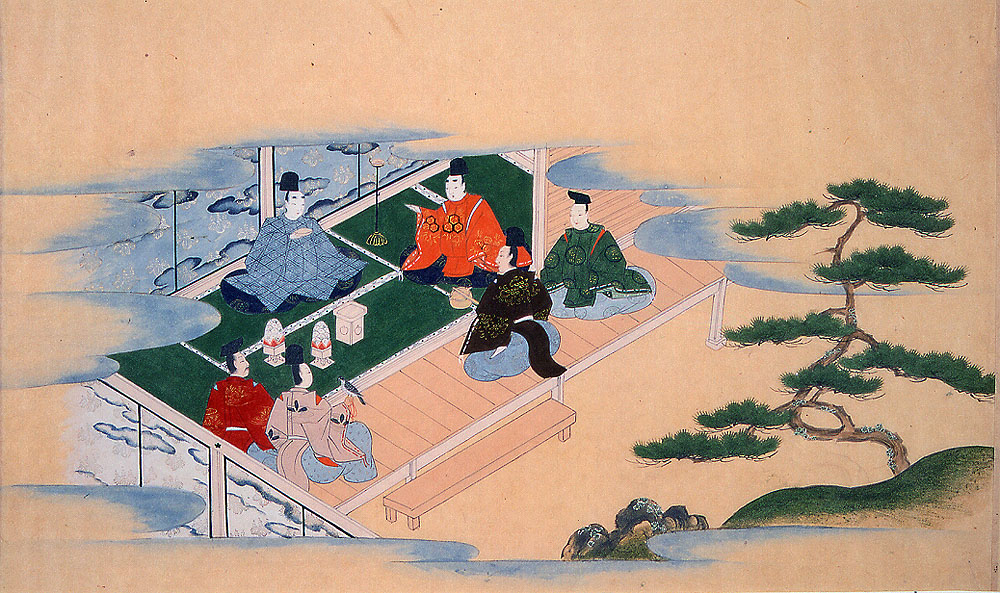 3) A banquet is held for the protagonist on the night of the promised rendezvous
3) A banquet is held for the protagonist on the night of the promised rendezvous
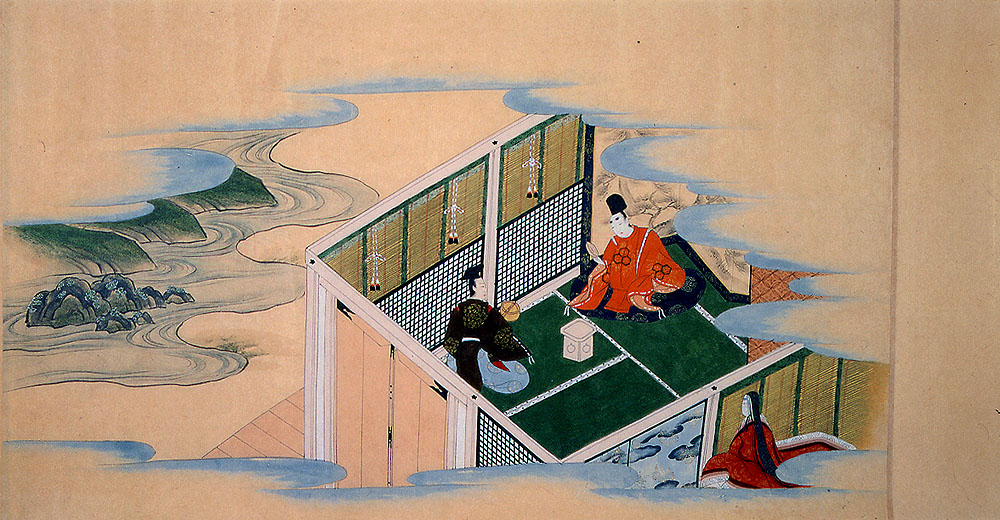 4) The protagonist, who failed to meet the Saio as promised due to the banquet, receives a poem from the Saio
4) The protagonist, who failed to meet the Saio as promised due to the banquet, receives a poem from the Saio
”Kari no Tsukai” (Imperial Huntsman) from Ise monogatari (The Tales of Ise)
A man visited the Saiku as an imperial huntsman, an officer assigned to hunt game for the imperial kitchen. The Saio welcomed the man as a revered guest. On the man’s part, the Saio was someone he had strongly desired to meet one day.One night, the Saio visited the room where the man was staying, and the two spent time in each other’s company. At dawn the man received a waka poem from the Saio, saying, “I am not sure whether last night was real or a dream.” The man wrote in reply a poem saying, “Let us meet again to find out for sure.”
However, the two could not see each other that night, because the head of the Saikuryo held a farewell banquet for the man.
The next morning, the man received from the Saio a sake cup bearing a half-finished farewell poem. The man completed it into a poem promising a future reunion, and then left the Saiku.
Genji monogatari (The Tale of Genji)
Thought to have been written around the early 11th century by Murasaki Shikibu (Lady Murasaki), Genji monogatari (The Tale of Genji) is a leading example of Heian-period (late 8th to 12th centuries) narrative literature. The early chapters of Genji monogatari relate the many love affairs of the protagonist, Hikaru Genji, against the backdrop of court life.A Saio (referred to as “the Ise Priestess”) appears in a number of episodes. She is the daughter of Lady Rokujo, a widow who is one of Genji’s lovers. After Lady Rokujo ends her relationship with Genji, she accompanies her daughter, who has been appointed Saio, to the Saiku.
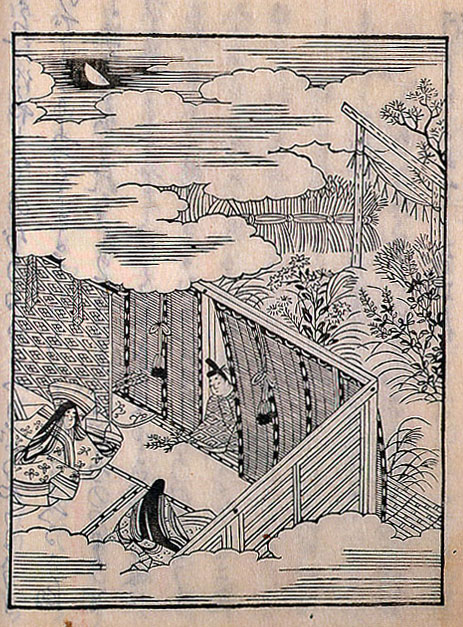 Lady Rokujo subsequently returns to the capital, where she dies after entrusting the care of her daughter to Genji. Genji marries Rokujo’s daughter to Emperor Reizei, a son Genji had secretly fathered. Rokujo’s daughter, after becoming imperial consort, is referred to as the Saiku no Nyogo, which means “imperial consort and former Ise Priestess.”
Lady Rokujo subsequently returns to the capital, where she dies after entrusting the care of her daughter to Genji. Genji marries Rokujo’s daughter to Emperor Reizei, a son Genji had secretly fathered. Rokujo’s daughter, after becoming imperial consort, is referred to as the Saiku no Nyogo, which means “imperial consort and former Ise Priestess.”It is thought that the character, who was accompanied by her mother to the Saiku and became an imperial consort after being recalled to the capital, was modeled after an actual Saio, Princess Yoshiko (929–985).
